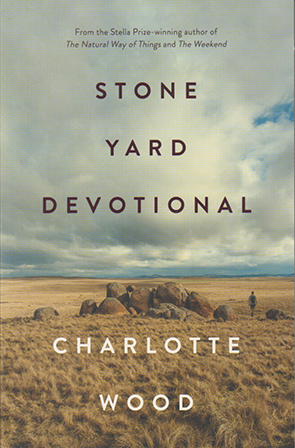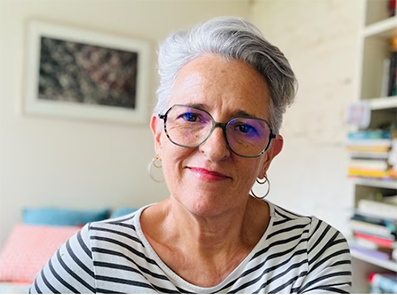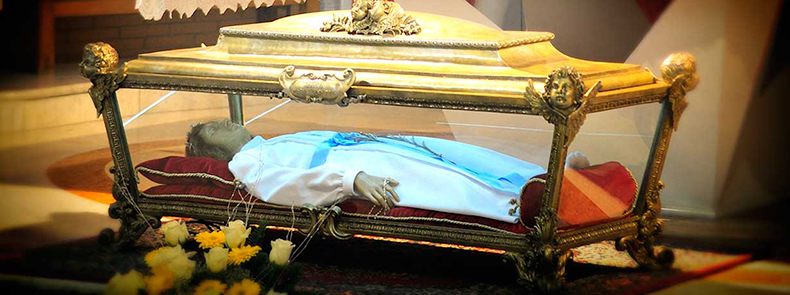
ISBN:9781761069499

- Category:Australian Fiction, Fiction (General)
- Date Read:2 November, 2024
- Year Published:2023
- Pages:293

A woman returns to the remote New South Wales Monaro region of her childhood after she separates from her husband to take residence in an abbey. It is the COVID world of 2020 and 2021. Outside the abbey COVID lockdowns begin to be enforced and mask wearing is mandated. Across rural New South Wales a mouse plague is also destroying people’s livelihoods and peace of mind. There are a million different issues besides COVID still occupying the efforts of activists and charity groups, but inside the abbey, apart from the burgeoning population of mice threatening to eat everything, including the church organ, the world is kept at bay. Our woman – she never names herself – has retreated from her life, like some of the nuns who reside in the abbey, even though she has returned to the very town in which most of her ghosts reside. She is an atheist but believes the routine of religious devotion helps her cope with the emptiness of passing time. This is the basis of Charlotte Wood’s Stone Yard Devotional.
The act of withdrawal is a common trope in literature: Allie Fox in Paul Theroux’s The Mosquito Coast; Axel Heyst in Joseph Conrad’s Victory. The point of these novels is that total withdrawal is never possible. Heyst retreats to Southeast Asia but three men, Mr Jones, Martin Ricardo, and Pedro, like fates from without, destroy the equilibrium of Heyst’s world and he eventually commits suicide. Allie Fox moves his family to the Mosquito Coast of Honduras to escape civilisation, but they are also visited by fate in the figures of three men they initially believe to be slaves. Fox destroys the world he has built to rid himself of them. For Charlotte Wood’s protagonist, fate returns in the figure of Sister Helen Parry. Sister Helen has become a ‘celebrity nun’, known in the media for her activism across a range of causes. Now, she accompanies the bones of a missionary murdered in Thailand, Sister Jenny, formerly of the abbey, back to the abbey to be buried in the abbey grounds.
Stone Cold Devotional is a deceptively simple novel. In the years the woman stays in the abbey she devotes her energies to improving the diet of the nuns, performing menial duties and participating in the religious aspects of abbey life, even though she is a non-believer. But when Sister Helen returns with the remains of Sister Jenny, the woman is confronted with conflicting feelings about her past. She went to school with Helen Parry, who suffered not only the abuse of her mentally ill mother, but also ostracism and physical violence from the woman and her peers as a student. Wood’s protagonist is again forced to confront her sense of shame and the life she lived during her formative years in the town. When we read this novel, we are presented with difficult questions: is atonement possible? Can we overcome our upbringing? Does meaning reside with religion or can we find it within secular lives? How does the knowledge of our own mortality affect our engagement with the world?
Stone Cold Devotional is a meditative novel that that is predicated on a simple plot – the return of Sister Jenny’s bones and Sister Helen’s forced stay due to COVID restrictions. This may seem to be leading to a simple rapprochement between the two women. Indeed, the novel is not heading to a destructive or tragic denouement in the manner of Theroux’s or Conrad’s novels. Instead, it delves into the psychology of these women, their pasts and the maternal relationships that have shaped them. Their hurts and their experiences are broad and typical enough of growing up in general, that it is possible we will see something of ourselves in their experiences: if not bullied, then a bully; if not religious, then without religion; if not supported, then unsupported. And more broadly, whatever their story, the women of the abbey have a certain commonality: “everyone here has hurt someone by coming.” For Sister Carmel, it is her two teenage children she has left behind to seek religious refuge. For Wood’s protagonist, she has left behind her husband, Alex, who does not understand what has happened to their marriage.
The abbey is a representation of the isolated self. Sister Helen’s presence is a reminder that the world cannot be kept at bay. She watches news on the television while the nuns pray, and Wood’s protagonist reflects, “She brings into our home, without apology, everything we so painstakingly left behind.” The abbey is a cloistered self, cut from the world and protected from it; where the outside world and other people can be forgotten. For Wood’s protagonist, this has its attractions, but she cannot separate herself entirely from who she was. This is most evident in her despair at the lack of interest the nuns have for social issues. When she came to the abbey the woman made the decision to unsubscribe from a whole array of causes that she has actively supported, including environmental and Aboriginal causes. But when she hears an American professor speaking on the radio about race issues, the issue of the Catholic Church’s involvement in Australia’s Aboriginal assimilation policies returns to her mind. She is outraged that the nuns want to ignore the issue and that they refuse to speak about it.
Wood’s protagonist has been raised by parents with a progressive agenda, and she has grown up sympathetic to a range of causes: Aboriginal rights, the environment, the issue of threatened species, vegetarianism (before it was more mainstream), the resettlement of Vietnamese refugees, eating disorders and the ills of capitalism. Pushed too far, the presence of this swathe of causes in the protagonist’s narrative may have seemed didactic or proselytising. But they serve to characterise the life and self she has left behind. The issue is of an authentic self.
Wood, in part, addresses this issue by contriving a subtle relationship between her protagonist and Sister Helen, suggesting both their similarities as well as evoking memories of the woman’s mother in the figure of Sister Helen. Helen Parry was abused, isolated, undefended, unsupported and despised at school, but she stood proudly for who she was and she is now an active figure in the world. There is a comparison to be made with the protagonist’s mother who supported many causes, despite the disapproval of parochial, even racist attitudes, in the town. And Wood’s protagonist even finds some merit in the memory of a father who expanded the issue of his daughter’s death to anorexia to suggest it was a response to the ills of capitalism. What she admires in Sister Parry and the father’s esoteric, though defensible, argument, is not their particular stance, but their indominable sense of who they are: “It’s been my observation over many years that those who most powerfully resist convention quite peaceably accept the state of being reviled.”
There is a glamour to a life lived with a strong purpose and sense of oneself. Sister Helen has gained notoriety with her activism, but Wood’s protagonist concedes the possibility of purpose even within the abbey. Sister Bonaventure, keeping vigil at the remains of Sister Jenny, insists, “I was born for this life”, though she argued with Sister Jenny before she left, who was clearly born for another. It is a point made in the protagonist’s mind, also, as she recalls the story of Maria Goretti, a young Italian girl who was murdered after she refused the sexual advances of a neighbour. Before she died, she forgave her killer. She was canonised in 1950. The woman admires Goretti’s resistance and bravery in the face of danger, rather than the religious patina added to the story. But she is also moved by Goretti’s forgiving of her murderer. Is raises the notion of forgiveness and atonement. On what terms does one face a past that has made us who we are. We sense that in the protagonist’s eyes, Maria Goretti may have been a victim, but with such a spirit she may have also been something in the world other than a saint.
The shadow of the past and death hover over this novel. By the second half of the novel there are stories of death everywhere, not the least of which is the millions of mice killed and buried on the abbey property. They form a neat juxtaposition to the intended burial of Sister Jenny, the fate of whose remains must be ruminated upon while the council subjects them to endless bureaucracy. Meanwhile, the pasts of Sister Helen and the woman are the backdrop of everything that happens in this story. There is a neat metaphor made of dams associated with this. One morning, at a stage when the protagonist has still mostly avoided Sister Helen, she goes swimming in the dam. As she finishes, Sister Helen appears on the other side of the dam to take her swim. The dam is a nice metaphor for these two women, both essentially different sides of a kind of character: two different possibilities of a life beginning in the same town, the same school. Another dam on the edge of town has formed so that a wire fence now runs through its middle. Divided as it is by the wire fence, the woman imagines the dam represents a ‘before’ and an ‘after’, like the personal histories of our formative years and the latter years of our coping. The women realises that even when a life crisis is long past, it is still present: “still there, like that dam water, insisting, seeping, across the past and the future.” That is the very matter of this novel.
Stone Yard Devotional may be a story about an abbey and the people who live there, but it is also a story set during a period when we were all cloistered in our homes, each facing different challenges and having to make adjustments in our lives. If nothing else, this fact makes this book highly accessible. It is a book about an abbey and the lives of two women, primarily, but it is a book with a universal appeal. At times, the writing assumes a mythic quality: “Something … must be properly reburied for the kingdom to be well”, Wood’s protagonist remarks of Sister Jenny’s bones. It is a thought reminiscent of Arthur and the grail. While Arthur is sick the land is sick. But in Stone Yard Devotional there is much to bury: Sister Jenny, the mice. But also, memories that must be exhumed and faced and reburied for wellness. Is forgiveness possible and under what circumstances can it be given or accepted? The novel raises many questions for its readers to grapple with. What is certain for Wood’s protagonist is a sense that, “something is coming, waiting to be born, out of this time.” For a novel that is weighted by so much death and grief, that is a promise that is hopeful.




No one has commented yet. Be the first!